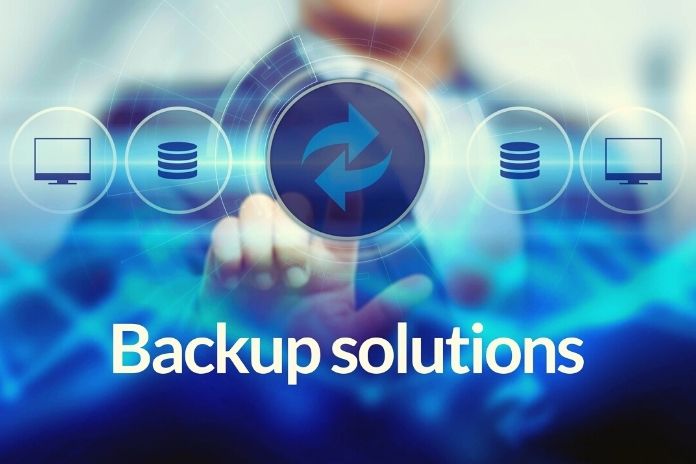Backup solutions have remained the same for a good 35 years. Once a day, usually at night. Backup is essential part of the IT infrastructure. But while the amount of data itself and the entire IT landscape has changed dramatically, backup solutions have essentially remained the same. During the less busy periods, the data is copied and stored in a second location to restore it later. With the new demands on modern data centers, this snapshot-based process seems outdated, and many companies are reaching the limits of current backup technology.
The challenges are not the relatively simple creation of backups but rather ensuring availability at all times. Many companies are therefore looking for alternatives to modernize their backup strategies. Continuous backups based on continuous data protection seem to be the logical alternative to periodic backups.
The Shortcomings Of Traditional Backup Solutions
Keeping systems online and high-performing around the clock has never been more critical than it is today. But no matter the cause of a failure, ransomware, environmental disasters, or simply human error, recovery can often take days with conventional backup methods. In addition, a periodic backup can cause data loss for up to 24 hours. Reason enough for companies to look for contemporary and more reliable solutions.
Periodic backups cost a lot of time and usually mean significant performance losses for the system. By nature, they are not very granular and therefore very quickly out of date given today’s rapidly increasing amount of data and the need to be up-to-date. The management of backups is often a complex and resource-intensive task in which dedicated systems and auxiliary solutions such as backup proxies or media agents are used. This has even led to many companies now employing their backup specialists in their IT teams.
Backup Solutions: The Creation Of Complex Application Chains
Another major challenge in today’s IT environments is that applications are not located on a single virtual machine (VM) but are distributed across different VMs with different roles. These applications are often partially dependent on other applications, which creates complex application chains.
Successful restoration of these entire application chains depends on how consistently these individual VMs can be restored. Inconsistencies make restoring applications tedious, complex, time-consuming, and often do not allow services to be resumed quickly. For this reason, the RTOs for the backup recovery time for production systems became longer and longer.
Backup Solutions: CDP Offers RPOs Of A Few Seconds
According to many experts, continuous data replication (CDP) is the future of backup solutions. CDP replicates every single IO in real-time so that RPOs of a few seconds can be achieved. All replicated changes are saved in a journal so that you can easily fall back on the latest point in time, with some solutions even up to 30 days in the past. CDP-based platforms not only allow very little data loss in the event of a failure, but thanks to orchestration and automation, files, applications, VMs, or even entire data centers can also be restored with just a few clicks.
Most use cases that require granular recoveries, such as file deletions, database corruption, or ransomware, only require short-term data backup.
Backup Solutions: Recovery Of Complex Multi-VM Applications
With the automation of restoration and orchestration, even complex multi-VM applications can be consistently restored. These chained applications are distributed across different VMs in different environments. They must be protected as a cohesive, logical unit to enable consistent recovery.
Modern solutions with CDP and orchestration set recovery points at which all VMs have precisely the same timestamp. In this way, each VM of the application starts from the same restore point. This allows the IT department to restart the service for each VM and even the most complex applications within seconds after the error occurred. Without having to start individual VMs manually or follow boot sequences.
Continuous Data Replication Without Loss Of Performance
Modern platforms that use CDP for backup combine disaster recovery, backup, and cloud mobility in a single, simple and scalable solution. This ideally consists of the critical components CDP with a journal instead of snapshots and orchestration and automation. It thus provides the basis for continuous data replication without impairing performance and enables the consistent recovery of applications from a few seconds ago to years ago. The journal combines short-term and long-term storage of data and, thanks to orchestration, enables files, VMs, applications, or entire data centers to be restored in a user-friendly workflow with just a few clicks.
The workflows mentioned are consistent across platforms and allow easy failover to a secondary location. For example, they were moving an application to Azure, using AWS as a DR location for IBM Cloud workloads, or simply restoring a file, VM, or an entire application. This orchestration & automation enables companies to pre-define everything to successfully restore workloads such as boot orders, the linking of IPs, or the network with just a few clicks.
Effortless Data Availability Instead Of Time-Consuming Backup Management
Companies need to protect their data and keep their IT available around the clock. The technological foundations of backup, especially snapshot technology, have been the same for about 35 years, making it difficult for IT teams to want to guarantee availability but instead find themselves all too often busy managing backups. The good news for companies and their IT alike: Solutions for continuous backup are already available and are not only a significant improvement over traditional backups but, in the best case, go one step further. You are finally bringing the existing solutions for backup, disaster recovery, and cloud mobility together.
ALSO READ: Security As Service: 4 Reasons For IT Security From The Cloud

